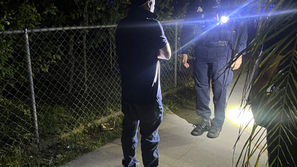Recalling B-52B’s fall
- John Rieping
- Sep 21, 2016
- 2 min read
‘We could see the big plume of smoke and orange flames’ The crash of a Boeing B-52B Stratofortress five miles south of Madera, near State Route 99 and Avenue 10 1/2, remains vivid for those who saw the tragedy.
“I was 9 years old when that thing went down. I was on a school bus on my way home,” said 69-year-old Mike Saburit, who was in 4th grade at the time. “We had just gotten out of school about 2:30 in the afternoon at James Madison, over by the high school … We heard the fire whistle blowing and we look up off to the distance … and we could see the big plume of smoke and orange flames.”
The fall of the long-range bomber, following two mid-air explosions, killed five of its crew of seven, destroyed an empty home and killed livestock.
When Saburit and others tried to investigate later, military police and others were “swarming” the area, he said, to protect the secrecy of the B-52, a new subsonic jet bomber in the middle of the Cold War. Farm workers in the field told him they saw parachutes that failed to deploy on fire as two airmen came down. Saburit and his friends found and kept a thick piece of the bulkhead that had yellow stampings “USAF” (U.S. Air Force) on it.
“We ended up with a big chunk of the fuselage of that thing … It came out about six months later that anybody harboring a piece of this aircraft was going to prison,” he said.
Scared, he and his friends hid the evidence. “It’s still buried in the lot over on Lake and 4th streets someplace,” he said.
Saburit saved an Oct. 1, 1956, issue of Life magazine that contained two black and white photographs of the B-52 crash taken by State Route 99 motorist Fred Crowhurst with his simple inexpensive Brownie camera (shown above). Now a granite memorial at Courthouse Park offers a less fragile reminder of the local wreck of a Castle Air Force base bomber.
























Comments